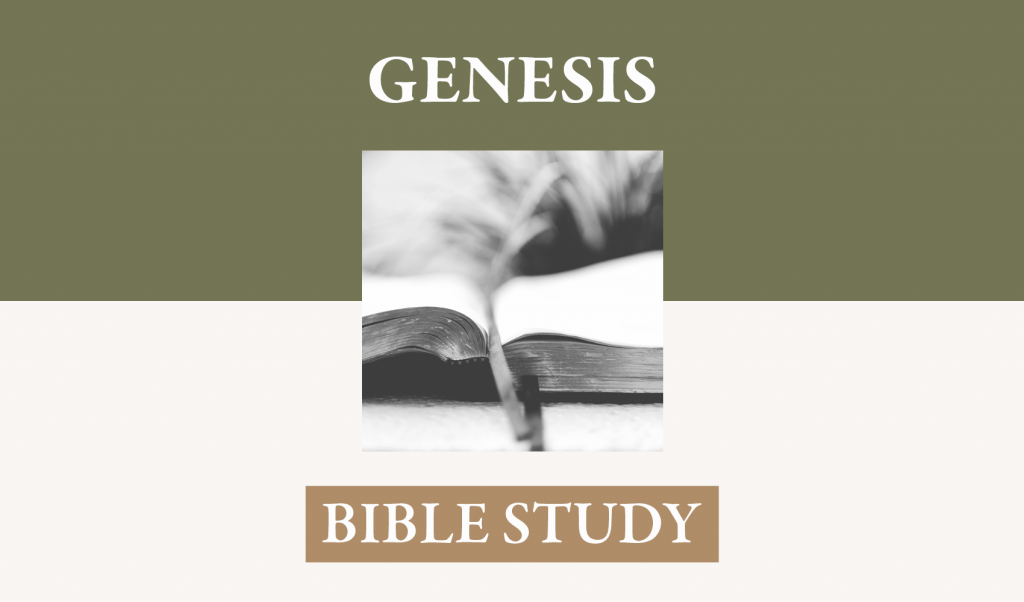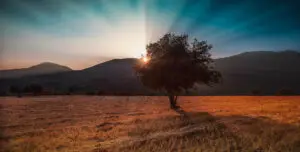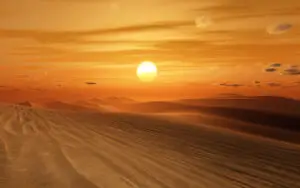Genesis 8
The flood constitutes a major event in the world’s history. It establishes both God’s absolute determination to judge lawlessness and his unshakeable faithfulness in bringing to completion the covenant of redemption embraced by his eternal Son. Those who reject the historical reality of the flood will be more prone to minimize the certainty of final and eternal judgment. The detail given this event in Scripture testifies to its historical truthfulness as well as to its doctrinal importance. Even the charming detail of the dove flying to the extended hand of Noah adds authenticity to the entire episode.
I. Verses 8:1–19 – The Care in Departing from the Ark
A. Verses 1–5 – After forty days of continual rain added to the bursting forth of fountains from the deep, the rain stopped, and the waters began to abate.
-
- “God remembered Noah” (8:1). This is the first use of the word “remember.”
-
-
- It is used again in 9:15, 16 in reference to God’s remembering the “everlasting covenant” with the world symbolized in the rainbow. Having brought the entire world under judgment by water, the next universal judgment will be by fire—“the heavens will pass away with a great noise, and the elements will melt with fervent heat; both the earth and the works that are in it will be burned up” (2 Peter 3:10). On another occasion God did destroy his enemies, the enemies of his people, when he drowned Pharaoh and the entire Egyptian army in the Red Sea. That was a reminder of God’s thoroughness of judgment with pinpoint accuracy. Even so, the judgment of Sodom and Gomorrah was a foretaste of the coming judgment by fire. Lot was saved from the conflagration because “God remembered Abraham” (Genesis 19:29).
- In Exodus 2:24 and 6:5, God remembered his covenant with Abraham, Isaac, and Jacob and began his rescue of Israel from its bondage in Egypt. Leviticus 26:42 again refers to the covenant with Abraham, Isaac, and Jacob as the foundation of God’s relenting in his acute judgement of Israel when they walk contrary to him.
- “Remember,” therefore, gathers all of God’s purposes in his covenantal provisions for the redemption of a people. His remembrance of Noah refers to his preservation of the world for the sake of preserving a people to be redeemed through the seed of the woman in Genesis 3:15.
-
-
- The wind that God caused to blow over the earth was to aid in the process of evaporation in the abating of the flood. It is also, however, reminiscent of the Spirit of God hovering over the face of the water on the first day of creation when the whole earth was covered with water. It helps us understand biblical analogies that relate to the Spirit’s work in bringing order out of chaos, pure and lively hearts out of dead hearts. Remember the promise of God’s putting his Spirit in his people and sprinkling them with pure water in Ezekiel 36:25–28 followed immediately by Ezekiel’s vision of the valley of dry bones in which he prophesied “Come from the four winds, O breath, and breathe on these slain, that they may live” (Ezekiel 37:9). Jesus used the mysterious operation of the wind in John 3 as an example of the work of the Spirit in giving the new birth to whom he wills. In John 20:22, Jesus breathed on his disciples in granting them the authority of the Holy Spirit in proclaiming forgiveness of sins.
- Five months from the beginning of the flood, the waters had receded enough for the ark to come to rest on Mount Ararat. About two- and one-half months after that, the tops of other mountains could be seen.
B. Verses 6–12 – Noah tested the condition of the earth to discern its fitness for human habitation.
-
- The Raven was sent first. It did not return to the ark [unless “to and fro” means back and forth from the ark] because it found sufficient carrion floating in the water for food and debris upon which it could find rest. Noah knew that the waters were putrid with death and flesh.
- The dove, far different in character, food preference, and suitable habitat came back when released on the first occasion. Noah’s extended hand received the desperate bird and drew it to rest and safety. By the return of this bird, Noah knew that water still made the ground uninhabitable and that vegetation had not yet been restored.
- Two more times Noah released the dove. It returned with an olive leaf showing that vegetation had begun to return. On its last flight from the ark, it found a place to land and thrive and did not return to the ark (12).
- Early commentators and homileticians allegorize these events. The raven represents the unregenerate who leave the safety of the church for the corruption of this world. The dove is the true Christian who stays in the ark [church] until the new heaven and the new earth are prepared for his habitation. The allegory shows ingenuity in interpretation, but the historical event as narrated has sufficient meaning in itself without the necessity of allegory.
C. Verses 13–19 – The earth soon was reclaimed for habitation.
-
- If these months are calculated with the same premise of contemporary arrangement of months, their stay on the ark was one year and ten days. God told Noah to leave the ark with his wife, and his sons and their wives, and to assure that every living thing that had been on the ark with them also left in order to resume life on the earth and to begin the process of replenishing it. God desired for the population of animals, insects, and humans to be abundant. Multiplication would be the key to the replenishment. Matthew Henry makes this interesting suggestion that both raven and dove, having already left the ark, “were ready to meet their mates at their coming out.”
- Noah did not determine the time to leave the ark. God did. His sense at this time probably was a mixture of gratitude for deliverance and restlessness to depart the confines of the ark. He did not, however, overstep the boundaries established by God but waited for the word. When the command to depart came, he immediately began to execute the responsibility of setting all the living things loose to find their fitting habitat. Noah knew how to recognize those animals clean and those considered unclean.
II. 8:20–22 – Noah acknowledged his complete indebtedness to mercy.
A. Noah’s first act as the leader of the redeemed humanity and the preserved creation was in recognition of the demand for preservation by sacrifice.
This was an impressive display of blood-shedding, with no delicacy or aesthetic appeal; it was a grizzly display of the curse, “You shall surely die.” Blood was followed by fire, burning, and smoke of “every clean animal and every clean bird” ((20). The ascending smoke contained a “soothing aroma.” The resident wrath of God against sin was stayed in light of the covenantal framework in which this sacrifice was made. The blood of the eternal covenant (Hebrews 13:20) was sure to come, giving final and perfect effect to the “grace that was given us in Christ Jesus before time began” (2 Timothy 1:9). “Christ also has loved us and given Himself for us, an offering and a sacrifice to God for a sweet-smelling aroma” (Ephesians 5:2). Evidently, the necessity of blood sacrifice had been communicated to each generation from the time of Adam. Adam observed God’s provision of a sacrifice to cover his and Eve’s newly established shame. Cain and Abel both knew of the requirement, and Abel followed it while Cain did not.
B. Though the flood gave the earth a new beginning, it did not change the human heart.
When death passed on all men from the sin of Adam, it did not only mean that eventually men would be deceived, sin personally, and thus incur a death sentence; it meant that spiritual deadness invaded his entire being. The only people alive when this utterance is made by God are those just rescued from judgment. If external provocation were all we needed to cease from sin, the flood certainly should have done it. But God looks on the heart and sees the fruit of Adam’s loins who share the justly imposed sentence of death that issued from his disobedience.
C. God pledged never to destroy the earth again by flood, but to allow it to stand with the predictable cycle of seasons.
This pledge not to destroy the world by flood does not eliminate the verdict of death that still stands over all humanity until redeemed in Christ. Peter, after recalling the first universal judgment through water, points to the certainty that the “heavens and earth that now exist are stored up for fire, being kept until the day of judgment and destruction of the ungodly” (2 Peter 3:7).
The wind that blew o’er the earth,
Sent by God with soothing pow’r,
Brought Creation’s second birth,
Looking toward the Spirit’s pow’r.
In the great display of wrath,
God remembered Eve’s own seed,
Stilled the waters stopped their path,
Marked the coast ‘tween sea and reed.
Mountain tops appeared at last,
Birds looked for a place to rest;
Sent from Noah, flying fast;
Search for food for that’s the test.
For the raven, food was found,
But the dove would mourning roam.
He must wait for drier ground,
Find his food, then make a home.
Man and beast may now come out.
Find your place, extend your kind;
“Fill the earth!” Creation’s shout,
“Praise the Lord, reflect his mind.”
Preservation through the blood,
Sacrifice is needed still.
Human sin retains its mood
Needing grace from Calvary’s hill.





















